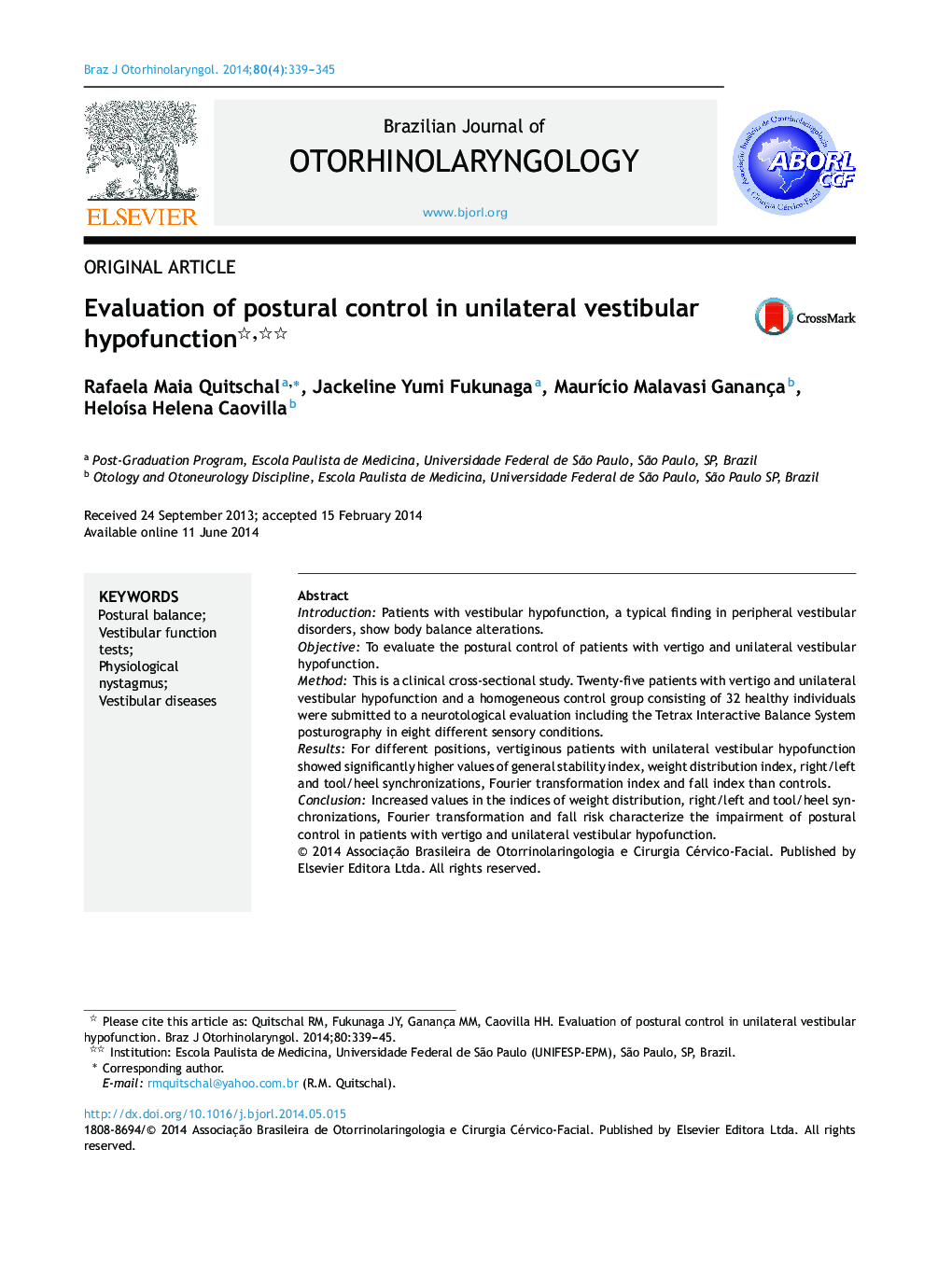| Article ID | Journal | Published Year | Pages | File Type |
|---|---|---|---|---|
| 4106352 | Brazilian Journal of Otorhinolaryngology | 2014 | 7 Pages |
IntroductionPatients with vestibular hypofunction, a typical finding in peripheral vestibular disorders, show body balance alterations.ObjectiveTo evaluate the postural control of patients with vertigo and unilateral vestibular hypofunction.MethodThis is a clinical cross-sectional study. Twenty-five patients with vertigo and unilateral vestibular hypofunction and a homogeneous control group consisting of 32 healthy individuals were submitted to a neurotological evaluation including the Tetrax Interactive Balance System posturography in eight different sensory conditions.ResultsFor different positions, vertiginous patients with unilateral vestibular hypofunction showed significantly higher values of general stability index, weight distribution index, right/left and tool/heel synchronizations, Fourier transformation index and fall index than controls.ConclusionIncreased values in the indices of weight distribution, right/left and tool/heel synchronizations, Fourier transformation and fall risk characterize the impairment of postural control in patients with vertigo and unilateral vestibular hypofunction.
ResumoIntroduçãoPacientes com hipofunção vestibular, achado típico em vestibulopatias periféricas, apresentam alterações de equilíbrio corporal.ObjetivoAvaliar o controle postural de pacientes vertiginosos com hipofunção vestibular unilateral.MétodoTrata-se de um estudo clínico transversal. No total, 25 pacientes vertiginosos com hipofunção vestibular unilateral e um grupo controle homogêneo de 32 indivíduos hígidos foram submetidos à avaliação otoneurológica, incluindo a posturografia do Tetrax Interactive Balance System em oito diferentes condições sensoriais.ResultadosO grupo experimental apresentou valores significantemente maiores do que o grupo controle quanto ao índice de estabilidade geral, índice de distribuição de peso, índice de sincronização da oscilação postural direita/esquerda e dedos/calcanhar, faixas de frequência de oscilação postural (F1, F2–F4, F5–F6, F7–F8) e índice de risco de queda, em diferentes condições sensoriais.ConclusãoAlterações de distribuição de peso, sincronização da oscilação postural direita/esquerda e dedos/calcanhares, faixas de frequência de oscilação postural e do índice de risco de queda caracterizam o comprometimento do controle postural em pacientes vertiginosos com hipofunção vestibular unilateral.
